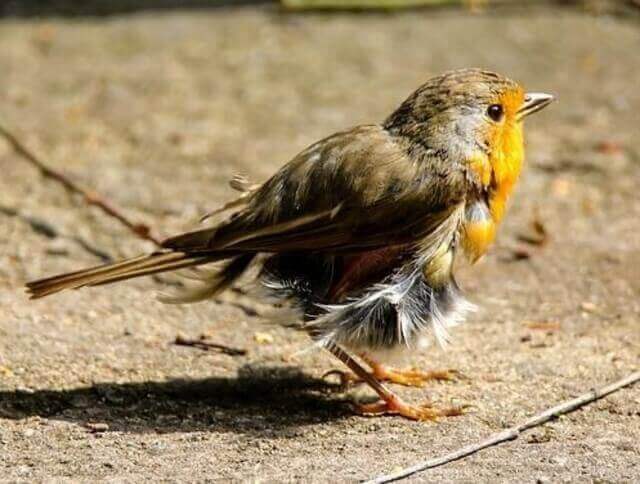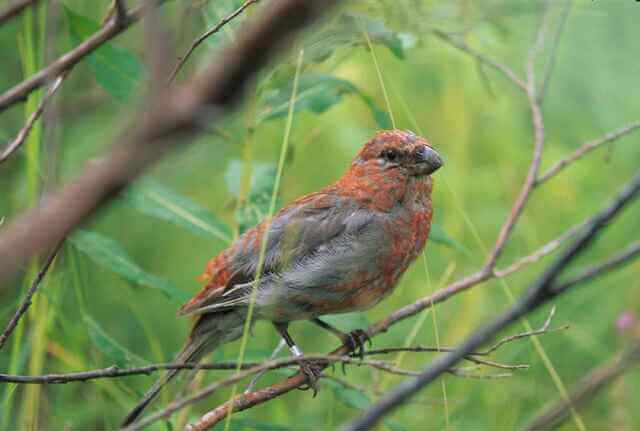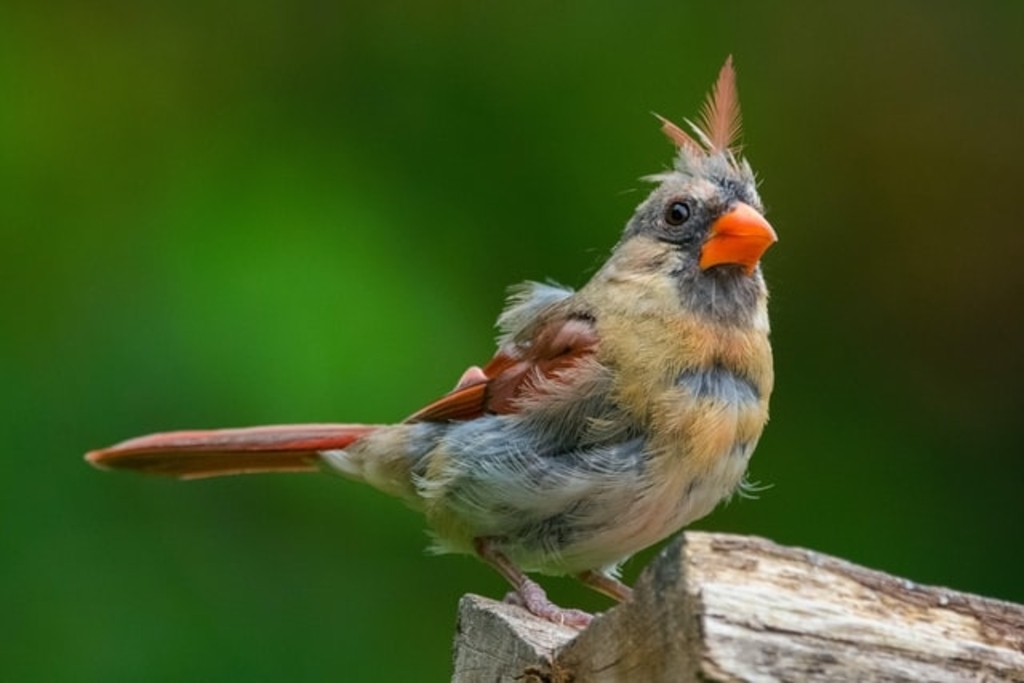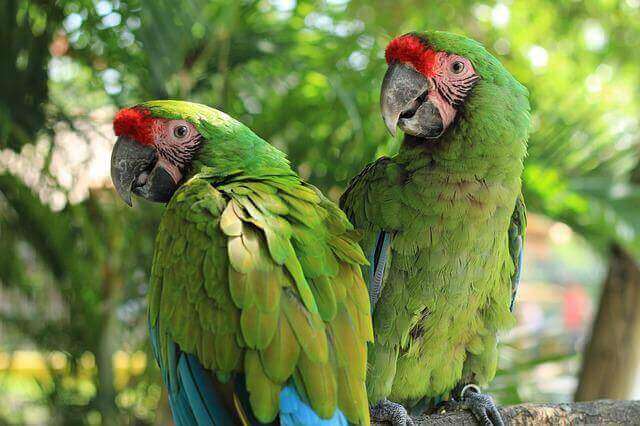Feathers are one of the most important parts of a bird. They help them stay warm, keep their bodies dry and protect themselves from predators. But what happens when they’re damaged? Can birds grow new feathers? This article will take a look at this topic in detail, and find out.
Table of Contents
- 1 Can birds regrow feathers?
- 2 How long does it take for a bird to regrow feathers?
- 3 Can birds regrow wings?
- 4 How to help my birds feathers grow back?
- 5 How often do birds molt?
- 6 Can birds fly without tail feathers?
- 7 How to treat feather loss in birds?
- 8 Vitamins for birds feather growth
- 9 Do cockatiel feathers grow back?
- 10 Can birds regrow tail feathers?
- 11 Can birds regrow wing feathers?
- 12 Can birds regrow primary feathers?
- 13 Can birds grow flight feathers?
- 14 Can birds regrow clipped feathers?
- 15 Do birds regrow lost feathers?
- 16 Can birds regrow plucked feathers?
- 17 Can a bird live without feathers?
- 18 Why do birds pluck their babies feathers?
- 19 Do budgie feathers grow back?
- 20 How do I stop my budgie from plucking her feathers?
- 21 Why do budgies eat their feathers?
- 22 Why do budgies wings bleed?
- 23 Can a bird with clipped wings ever fly again?
- 24 Is it cruel to clip a bird’s wings?
- 25 Why do parrots lose their feathers?
- 26 Why does my bird chew his feathers?
- 27 Why is my African Gray plucking his feathers?
- 28 Do chicken feathers grow back?
- 29 Will chicken feathers grow back after plucking?
- 30 Do birds lose feathers when stressed?
- 31 What is a pin feather on parrot?
- 32 What does a plucked feather look like?
- 33 Is feather plucking normal?
- 34 Author
Can birds regrow feathers?
Yes, birds can regrow feathers. Feathers are important for flight, insulation, and camouflage. They are also used in courtship and communication.
Birds can lose feathers for a variety of reasons, such as molting, fighting, or being plucked by a predator. When a bird loses a feather, the shaft of the feather is still in the skin.
New feathers grow from the follicle at the base of the old shaft. The new feather pushes the old shaft out of the skin.
How long does it take for a bird to regrow feathers?
A bird’s feathers play a major role in its survival. Not only do they keep the bird warm, but they also help the bird fly and maneuver. So when a bird’s feathers are damaged or fall out, it’s important for them to grow back as soon as possible.
How long it takes for a bird to regrow its feathers depends on a variety of factors, including the type of bird, the extent of the damage, and the climate. In general, most birds will grow new feathers within 1-12 months.
The process of growing new feathers starts with the development of feather follicles. These are tiny sacs that contain the cells that will eventually produce new feathers. Once the follicles have formed, the new feathers will start to grow in slowly at first, before picking up speed as they mature.
Can birds regrow wings?
Birds are able to regrow their feathers, but not their wings. If a bird’s wing is severed, it will not grow back.
However, if the feathers on a bird’s wing are damaged, the bird will be able to grow them back. This is because feathers are not essential for flight, whereas wings are.
How to help my birds feathers grow back?
One of the easiest ways to help a bird’s feathers grow back is by misting them with water regularly. Misting the bird regularly will result in the softening of the hard sheath, which will make it easier for the new feathers to break through.
Additionally, be sure to provide your bird with plenty of sunlight. This will help them synthesize vitamin D, which is essential for proper feather development.
If your bird is losing feathers due to a nutritional deficiency, providing them with a balanced diet should help rectify the issue. Finally, if you have any questions or concerns about your bird’s feather loss, be sure to consult a veterinarian.
How often do birds molt?
Birds molt in order to replace their old feathers with new ones. This process allows them to stay flying and looking their best. How often do birds molt, though?
For most birds, molt occurs once a year. However, there are some species of birds that may have two molts a year.
The American Goldfinch is one such bird. Molting can happen at any time of year, but it is usually triggered by changes in the length of daylight or weather conditions.
When a bird starts to molt, it will lose its old feathers gradually. New feathers will grow in to replace them. During the molt process, birds may look a little ragged as they lose their feathers.
Can birds fly without tail feathers?
Birds do not require their tail feathers to fly. While many birds use their tail feathers for balance and steering while flying, birds can still fly without them.
Some bird species, like the American kestrel, will lose all of their tail feathers during the molt, but they are able to fly perfectly well. Other birds will lose only a few tail feathers and still be able to fly normally.
How to treat feather loss in birds?
Feather loss in birds can be caused by a variety of factors, including infection, parasites, poor nutrition, and environmental stress. If your bird is losing feathers, it is important to determine the underlying cause and treat it accordingly.
In some cases, feather loss may be a sign of a more serious problem and should be evaluated by a veterinarian. The most common treatment for feather loss is antibiotics if an infection is present.
Treatment for parasites may include medication or removal of the parasites. If poor nutrition is the cause of feather loss, supplements or changes in the bird’s diet may be necessary.
Environmental stress can often be addressed by making changes to the bird’s environment such as increasing the amount of sunlight or providing more perches.
Vitamins for birds feather growth
Feathers play a crucial role in the lives of birds. They provide insulation from the cold, protect against the sun’s heat, and are essential for flight. In order for birds to maintain healthy feathers, it is important to provide them with the right vitamins and minerals.
The most important vitamins for feather growth are vitamin A, vitamin D, and vitamin E. vitamin A is necessary for the production of keratin, which is the protein that makes up feathers.
Vitamin D helps birds absorb calcium from their diet, which is necessary for healthy bones and feathers. And vitamin E helps protect feathers from damage caused by free radicals.
Do cockatiel feathers grow back?
Yes, cockatiel feathers do grow back. However, they will not necessarily look the same as the original feathers. Cockatiels go through a molt every year, which is when they lose their old feathers and grow new ones.
During the molt, some of the old feathers may fall out before the new ones have grown in completely. This can cause the bird to look patchy until all of its new feathers have grown in.

Can birds regrow tail feathers?
Can birds regrow tail feathers? The answer is yes, and in record time too! In fact, many bird species can completely regrow their tail feathers in just a few weeks.
This ability is particularly beneficial for birds that rely on their tails for balance and agility in the air, such as woodpeckers and hummingbirds. One of the most impressive examples of rapid tail feather regeneration is the hummingbird.
Hummingbirds typically molt all of their feathers once a year, including their tail feathers. However, if one or more of their tail feathers are lost or damaged, they can grow a new one in just a few weeks.
Woodpeckers are also known for their amazing ability to regenerate lost tail feathers. In fact, woodpeckers can regenerate up to eight new tail feathers in just two weeks!
Can birds regrow wing feathers?
Birds are able to regrow their wing feathers, but the process is not always successful. Studies have shown that birds can regenerate lost feathers, but it depends on the species and the age of the bird.
Young birds are more likely to be successful at regenerating feathers than older birds. Some species of birds, like parrots, are better at regenerating feathers than other species.
Can birds regrow primary feathers?
It is possible for a bird to regenerate its primary feathers, but the time frame for this process varies depending on the species of bird. For example, most songbirds can regenerate their primaries within six to twelve months, while raptors may take up to a year or more.
In some cases, a bird’s primaries may not grow back entirely and may be shorter than the originals; however, they will still function adequately for flight.
Can birds grow flight feathers?
Yes, birds can grow flight feathers. Flight feathers are very important for a bird’s ability to fly. They give a bird lift and help it steer while flying.
Birds lose flight feathers regularly, and they grow back quickly. New flight feathers are soft and flexible, but they harden and become more aerodynamic as they mature.
Can birds regrow clipped feathers?
Yes, birds can regrow clipped feathers. Feathers are essentially dead tissue, and so they can be regenerated as long as the follicle that anchors the feather to the bird’s skin remains intact. When a feather is clipped, the new feather will grow back in its place.
The process of feather regrowth varies from species to species. Some birds, such as parakeets, can regrow all of their feathers within a few weeks. Other birds, such as pigeons, may take several months to completely regrow their feathers.
Birds rely on proper nutrition and hydration in order to support feather growth. Providing your bird with a high-quality diet and plenty of clean water is essential for healthy feather growth. If you decide to clip your bird’s feathers, it is important to do so in a careful and controlled manner.
Do birds regrow lost feathers?
In general, birds do have the ability to regrow feathers that have been lost, but the process is not always successful. For example, a bird that has lost a lot of feathers may not be able to produce new feathers that are of the same quality as the original feathers.
In some cases, birds will simply grow a new set of feathers that are much shorter or coarser than the original feathers.
Can birds regrow plucked feathers?
Birds are able to regrow their feathers after they have been plucked. The process of feather regeneration begins with the development of a blood clot at the site of the injury.
This blood clot will eventually form a new feather shaft. New feathers will then grow from this shaft. It can take anywhere from a few weeks, up to twelve months for a new feather to fully grow in.
Can a bird live without feathers?
While it is possible for a bird to live without feathers, they would not be able to survive in cold climates or fly very well. Without feathers, a bird would be more susceptible to predators and would have a difficult time finding food.
Birds use their feathers for insulation, camouflage, and communication. They rely on their feathers to keep them warm in cold weather and to cool them down in hot weather. Feathers also help birds hide from predators and attract mates.

Why do birds pluck their babies feathers?
There are a couple of reasons as to why this could be happening. The first reason is that the parents want the babies out of the nest, so they can start another clutch of eggs.
If there are too many babies in the nest, then the parents will not be able to provide enough food for all of them. Another reason as to why birds might pluck their baby’s feathers is because there are parasites attacking them.
If there are parasites on the baby, then the parents will try to remove them by plucking their feathers. This will help keep the baby healthy and free from any parasites.
Do budgie feathers grow back?
Budgie feathers do grow back, but it can take some time. Feathers are constantly growing and regenerating, so if you’re patient, your bird’s feathers will eventually return to their former glory.
However, if your bird is plucking his or her feathers out, there may be an underlying issue that needs to be addressed. In some cases, a vet may need to be consulted in order to help your bird get back on track.
How do I stop my budgie from plucking her feathers?
There are a few things you can do to help stop your budgie from plucking her feathers. One is to make sure she has plenty of toys to play with. Budgies need lots of stimulation, and if they’re not getting it from playing, they may start picking at their feathers as a way to entertain themselves.
You can also try giving your budgie more attention. A lot of times, plucking can be a sign that the bird is lonely or bored. If you can spend time with your budgie each day and give her plenty of attention, she may stop plucking her feathers altogether.
Finally, you can try adding some supplements to her diet. Some birds may start plucking their feathers if they’re not getting enough vitamins or minerals in their diet.
Why do budgies eat their feathers?
Budgies are known to eat their own feathers. This behavior is called feather-pecking and it’s common in budgies. In fact, almost all budgies will do it at some point in their lives. So, why do they do it?
While the reason for this behavior is unknown, there are a few theories as to why it may occur. One theory suggests that eating feathers may help budgies remove parasites from their plumage.
Another theory suggests that feathers may provide some nutritional value to the birds, helping them meet their dietary needs. Still, another theory suggests that feather-eating may be a behavioral response to stress or anxiety in budgies.
Regardless of the reason, feather-eating is considered a normal behavior for budgies and does not typically indicate a health problem.
Why do budgies wings bleed?
Budgies, like most birds, have wings that are covered in feathers. Beneath the outer layer of feathers is a layer of pin feathers. Pin feathers are new feathers that have not yet grown to their full length.
They are sharp and thin, and can easily be damaged. If a budgie’s wing is hit or pulled, the pin feathers can be pulled out, leaving the blood vessels exposed. The blood vessels will then bleed, causing the wing to look red and wet. There is no need to worry if your budgie’s wings start bleeding.
The bleeding will stop on its own within a few minutes. You can help speed up the healing process by gently applying pressure to the wound until the bleeding stops. If the bleeding does not stop on its own, you may need to take your budgie to a veterinarian for assistance.
Can a bird with clipped wings ever fly again?
In some cases, if a bird’s wings are clipped only slightly, they may be able to fly again with some rehabilitation. However, if a bird’s wings have been severely clipped or damaged, they may never be able to fly again.
It is important to seek professional advice from an experienced veterinarian or avian specialist in order to determine the best course of action for rehabilitating a clipped bird.
Is it cruel to clip a bird’s wings?
Some people believe that it is cruel to clip a bird’s wings, while others believe that it is necessary for the bird’s safety and well-being. The truth is, clipping a bird’s wings can be both cruel and necessary.
If done correctly, clipping a bird’s wings can help them stay safe and healthy. However, if done incorrectly, it can lead to health problems for the bird.
Clipped wings can cause difficulties in flying and landing, which can lead to problems such as broken bones or being easy prey for predators.
Why do parrots lose their feathers?
There a several reasons why a parrot may lose its feathers. The most common reason is because they are molting. When a bird molts, it sheds its old feathers and grows new ones.
This usually happens once a year, but can vary depending on the bird’s age and health. Another reason why parrots might lose their feathers is because they are sick. If a bird has a virus or infection, it might lose its feathers as a result.
Finally, environmental factors can also cause birds to lose their feathers. If the bird is exposed to extreme heat or cold, for example, it might shed its feathers as a way to adapt to the new conditions.
Why does my bird chew his feathers?
Birds may chew on their feathers as a way of relieving stress or boredom. If a bird is in an environment that is not stimulating or does not meet its needs, it may start chewing on its feathers as a way of entertaining itself.
Some simple ways to help reduce stress or boredom in your bird include providing them with plenty of toys and activities, changing up their diet, and adding new things to their environment.
If you notice that your bird is chewing on its feathers excessively, it’s important to take it to a veterinarian to determine the underlying cause.
Why is my African Gray plucking his feathers?
African greys are known for plucking their feathers, which is often a sign of stress or depression. If your bird is plucking its feathers, there are a few things you can do to help.
First, make sure your bird has plenty of stimulation. African greys need lots of toys and activities to keep them mentally stimulated. If your bird is bored, it may start plucking its feathers as a way to entertain itself.
Another possible cause of feather plucking is stress. African greys can become stressed for many reasons, including changes in their environment or the addition of a new pet to the home.
If you think stress may be the root cause of your bird’s behavior, try taking some steps to reduce the amount of stress in its life. This may include giving it more space, adding more birds to its flock, or providing more toys and perches.
Do chicken feathers grow back?
Yes, chicken feathers will grow back! Feathers are a type of appendage that is found on the body of most birds. They are made of keratin, which is the same protein that makes up human hair and nails.
Feathers are important for insulation, flight, and camouflage. Each feather has a central shaft called a rachis, and smaller branches called barbs. The barbs branch off into even smaller barbules.
These barbules have tiny hooks that interlock to keep the feathers in place. When a bird preens (cleans) its feathers, it uses its beak to straighten out the barbules. New feathers grow from follicles in the skin.
As the feather grows, blood vessels supplying it with nutrients travel down the shaft to the tip. When the feather is fully grown, these blood vessels shrivel up and disappear.
Will chicken feathers grow back after plucking?
The short answer to this question is yes, chicken feathers will grow back after plucking. However, it is important to note that the rate at which they grow back may vary depending on the individual bird.
Generally speaking, feathers should start growing back within a few weeks of being plucked. It is also worth mentioning that there are a few things you can do to help promote healthy feather growth.
One of the most important is to make sure your chickens have access to fresh water and plenty of nutritious food.
You may also want to provide them with a good quality supplement such as Feather Fast, which is designed to help promote healthy feather growth.
Do birds lose feathers when stressed?
There are a few different ways that birds can lose feathers, and whether or not they do so in response to stress depends on the species of bird and the particular situation. In some cases, birds may lose feathers due to stress, while in others they may not.
One common way that birds lose feathers is called molting. Molting occurs when a bird sheds old feathers in order to make room for new ones.
This typically happens once or twice a year, and usually happens in response to changes in the bird’s environment, such as temperature or daylight hours. Molting can also be triggered by stress, but this is not always the case.
What is a pin feather on parrot?
A pin feather is a developing feather that is located in the axil of a pre-existing feather. Pin feathers are small, and their shafts are thin and delicate.
They are usually red or pink colored. Pin feathers play an important role in the development of new feathers.
They produce the keratin sheath that covers the new feather’s shaft, and they help to anchor the new feather in place. Pin feathers can be removed without causing any damage to the new feather.
What does a plucked feather look like?
A plucked feather is a feather that has been removed from a bird by pulling it out of the follicle. A plucked feather will have the shaft and vanes still attached, but the barbs and barbules will be missing.
The shaft is the long, thin central part of the feather, while the vanes are the web-like structures that extend out from either side of the shaft.
The barbs are the small, thin projections that stick out from the vane, and the barbules are the tiny projections that stick out from the barbs.
When a bird molts, it will lose feathers one at a time, so most of its feathers will be in various stages of molt. A plucked feather will usually be shorter than a normal feather, and it may be curved or twisted because it was pulled out of the follicle at an angle.
Is feather plucking normal?
Feather plucking is a behavior that is seen in many different types of birds. While it is not considered normal, it is not necessarily abnormal either. There can be many different reasons why a bird might start plucking its feathers.
Some of the most common causes include boredom, stress, and lack of stimulation. If you have a bird that is plucking its feathers, the first step is to figure out the root cause of the behavior.
Once you have determined the cause, you can then take steps to correct it. If feather plucking becomes severe, it can lead to bald patches and even skin infections.
Related Post:



